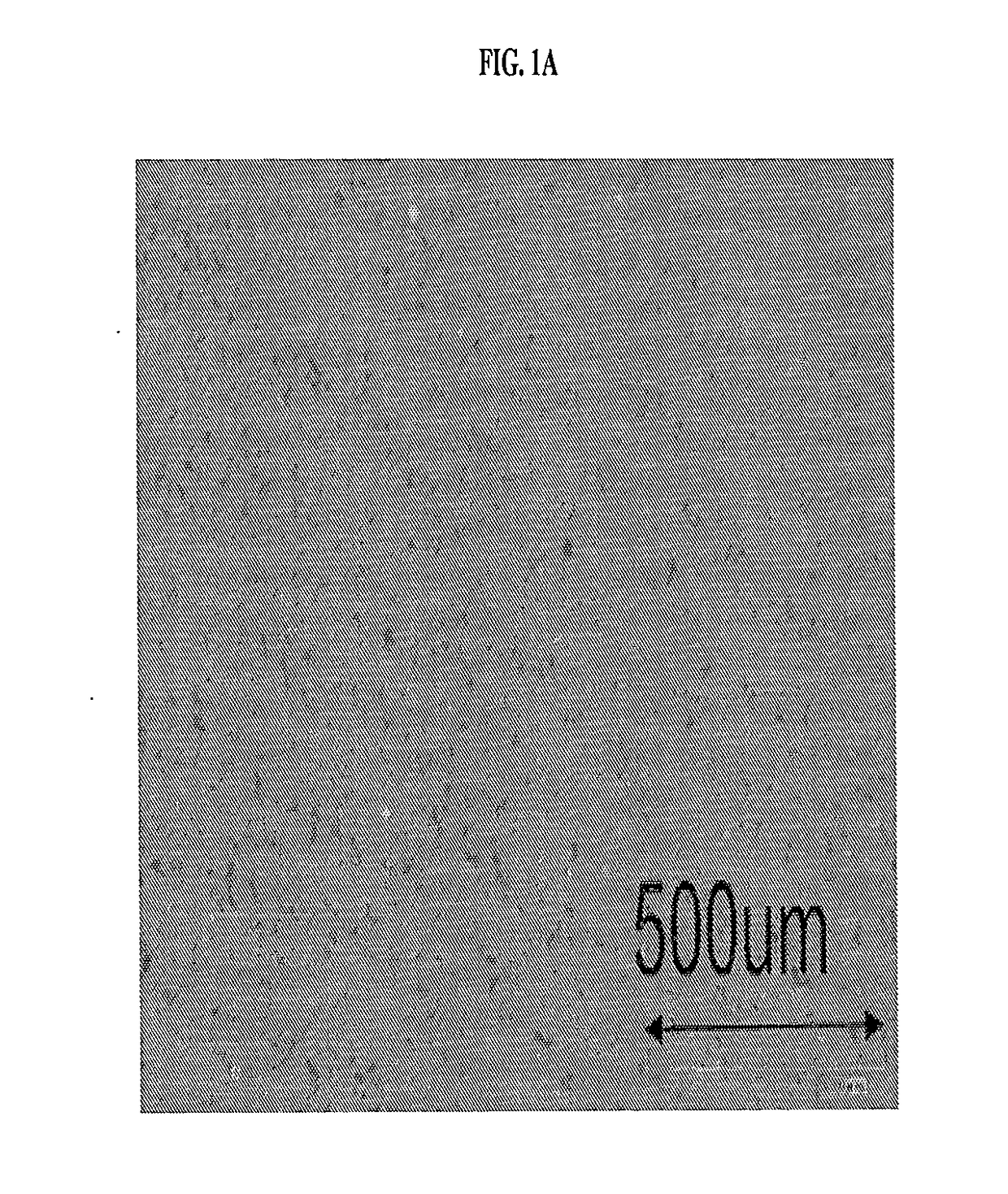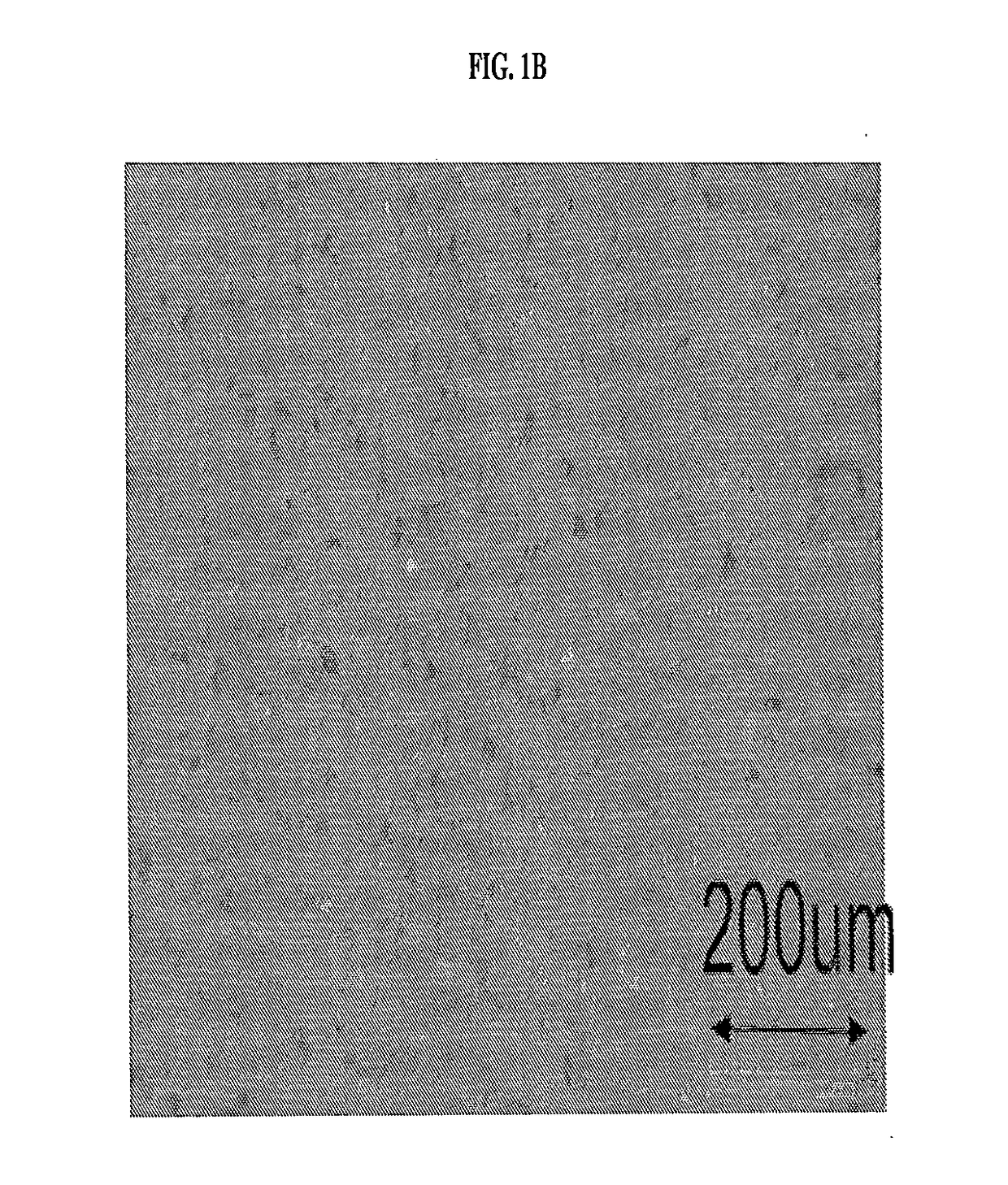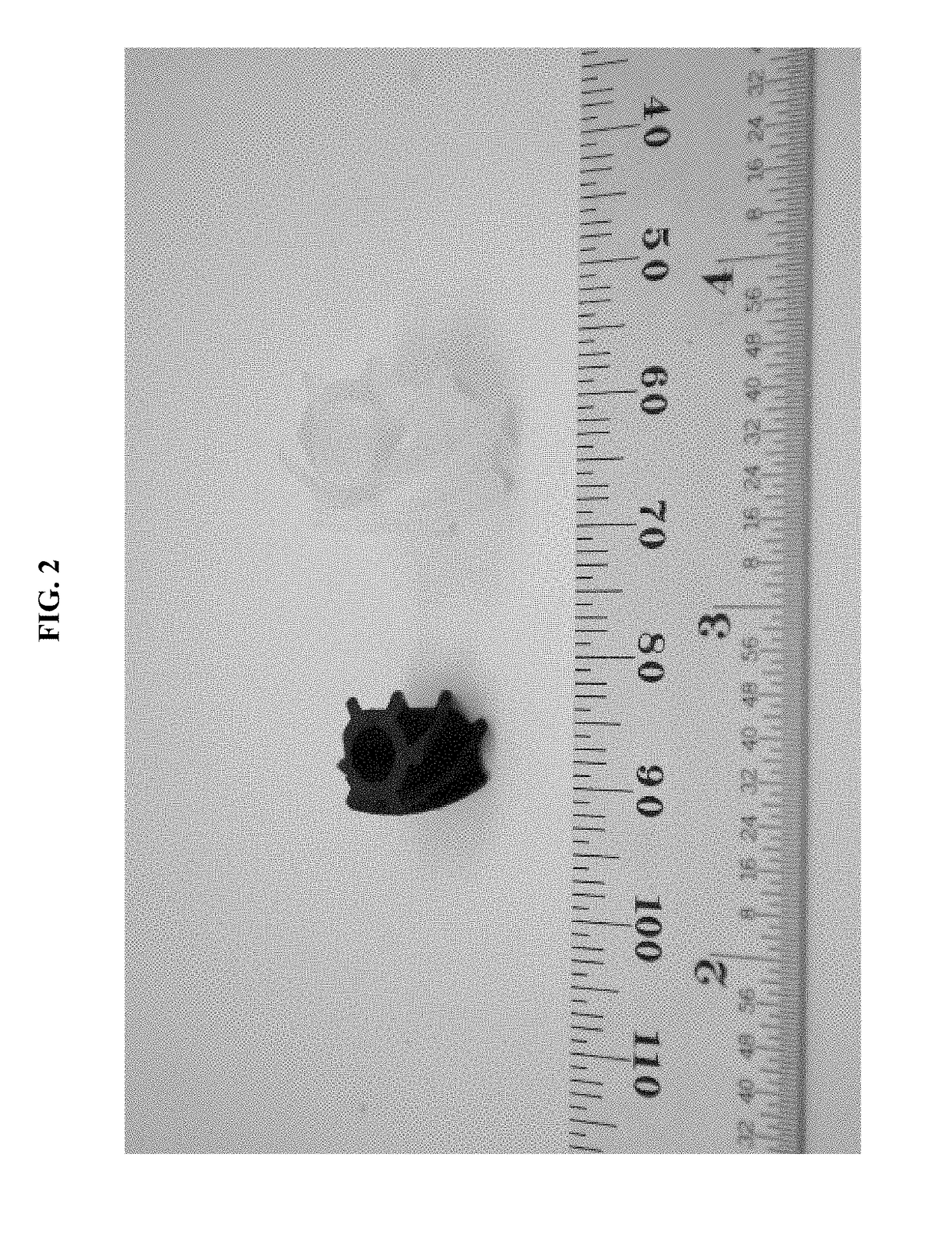Monomer formulations and methods for 3D printing of preceramic polymers
a preceramic polymer and monomer technology, applied in the direction of 3d object support structures, metal-working apparatuses, inks, etc., can solve the problems of low fracture toughness, limited thermal shock resistance, brittle failure, etc., and achieve the effect of inhibiting the degradation of solid-phase fillers
- Summary
- Abstract
- Description
- Claims
- Application Information
AI Technical Summary
Benefits of technology
Problems solved by technology
Method used
Image
Examples
example 1
Preparation of 3D-Printing Composition for SiC / SiOC UV-Cured Ceramic Matrix Composite
[0277]A monomer mixture containing 100 parts of vinylmethoxysiloxane polymer, 100 parts of (mercaptopropyl)methylsiloxane polymer, 0.5 parts of 2,2-dimethyl-2-phenylacetophenone, 0.15 parts of tert-butylhydroquinone, and 0.25 parts of 2,2′-(2,5-thiophenediyl)bis(5-tert-butylbenzoxazole) (all parts by weight), is thoroughly blended to make sure the components are well-mixed and the mixture is a uniform system. This resin is capable of forming a silicon oxycarbide (SiOC) ceramic phase when polymerized and thermally treated.
[0278]Then 25% by weight silicon carbide (SiC) powder with 50 μm particle size is blended and sonicated to disperse the SiC particles into the above resin. The SiC microparticles serve as solid-phase fillers in the SiOC-forming resin. The mixture is then ready for use as a monomer formulation in UV-cured 3D printing.
[0279]Optical microscope images of SiC solid-phase fillers disperse...
example 2
Production of 3D-Printed, UV-Cured SiC / SiOC Ceramic Matrix Composite
[0280]The monomer formulation of Example 1 is 3D-printed and UV-cured, followed by thermal treatment to form a ceramic matrix composite. Bulk parts are demonstrated by curing layers at 385 nm with LED-UV to form a preceramic polymer, and then pyrolyzing the preceramic polymer at 1000° C. in inert atmosphere to form a pyrolyzed ceramic material. FIG. 2 shows a photograph of the preceramic polymer (right-hand side) and the darker pyrolyzed ceramic part (left-hand side).
[0281]FIG. 3 is a graph of thermogravimetric analysis for the pyrolysis of the UV-cured preceramic polymer into a pyrolyzed ceramic material, measuring the loss of sample mass over time as the pyrolysis temperature increases.
[0282]The versatility and the applications of these preceramic resin formulations make them especially useful. A variety of applications in the automotive and aerospace industries, among others, may benefit from the ability to 3D-pr...
PUM
 Login to View More
Login to View More Abstract
Description
Claims
Application Information
 Login to View More
Login to View More - R&D
- Intellectual Property
- Life Sciences
- Materials
- Tech Scout
- Unparalleled Data Quality
- Higher Quality Content
- 60% Fewer Hallucinations
Browse by: Latest US Patents, China's latest patents, Technical Efficacy Thesaurus, Application Domain, Technology Topic, Popular Technical Reports.
© 2025 PatSnap. All rights reserved.Legal|Privacy policy|Modern Slavery Act Transparency Statement|Sitemap|About US| Contact US: help@patsnap.com



